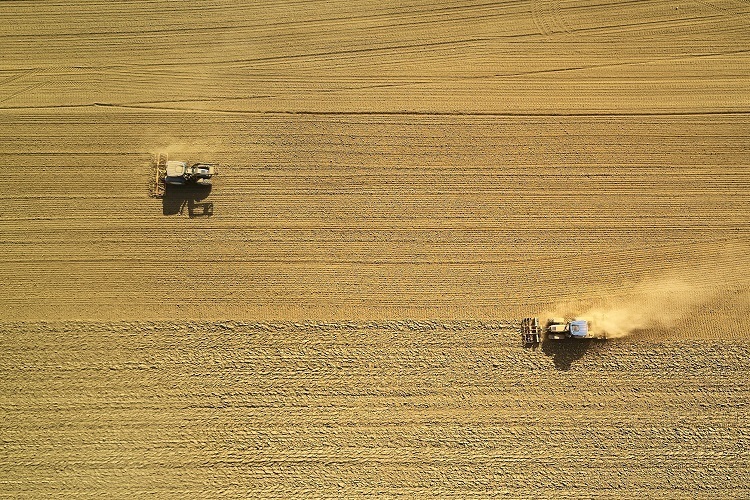Solar farms have gained in popularity as people around the world continue to look for sustainable and clean energy sources, especially in the field of mining equipment hire. In these massive constructions, photovoltaic (PV) panels are utilised to convert sunlight into power. However, the calibre and robustness of a solar farm’s machinery determine its ability to function effectively.
In this article, the necessary hardware, such as PV panels, inverters, racking and mounting systems, monitoring systems, transformers and switchgear, electrical wiring and conduit, energy storage systems, and security systems, required to set up and manage a solar farm will be discussed. The efficiency and dependability of solar farm equipment are key factors in its success. Everyone who is interested in building or operating a solar farm must have a firm grasp of these devices.
Table of Contents
Must-Have Solar Farm Equipment
Here is a comprehensive guide on the most must-have solar farm equipment:
1. PV Panels
PV panels are the most important piece of machinery in a solar farm. The devices’ silicon cells convert solar energy into electrical energy. The efficiency of PV panels is measured by their ability to produce power from sunshine. With higher efficiency comes more electricity being generated. Thin-film and crystalline silicon PV panels are two different varieties. Because of their high efficacy, crystalline silicon panels are used more frequently.
2. Inverters
For usage in residences and commercial buildings, inverters change the direct current (DC) electricity generated by solar panels into alternating current (AC). Additionally, inverters have safety features including grid overload protection and shut-off systems. String inverters and microinverters are the two different types of inverters. Microinverters are utilized for smaller installations, while string inverters are used for bigger solar farms.
3. Racking and Mounting System
Systems for mounting and racking PV panels keep the panels in position. They are essential for the security and stability of the solar farm.
The two primary types of racking systems are fixed and tracking. Fixed racking systems hold the PV panels in place while tracking systems keep an eye on the sun’s course to maximise the amount of sunshine the panels receive.
4. Monitoring System
Monitoring devices are used to keep an eye on the PV panels’ efficiency and the solar farm’s overall health. They gather data on weather trends, equipment condition, and energy output. Using the data, the solar farm’s performance is optimised, and any possible issues are identified.
5. Transformers and Switchgears
The health of the solar farm as a whole is monitored, as well as the efficiency of the PV panels. They gather information on energy output, equipment status, and weather patterns. The information is utilised to optimise the solar farm’s performance and spot any potential problems.
6. Electrical Wiring and Conduit
Electrical wire and conduit are used to link the PV panels, inverters, transformers, and switchgear. They are essential for the reliable and secure transfer of power. The electrical wiring and conduit must be designed and installed by qualified professionals in order to ensure the security and dependability of the solar farm.
7. Energy Storage System
The excess energy that the solar farm produces is stored using energy storage systems for later use. They are necessary to achieve grid stability and an equilibrium between the supply and demand of electricity. Systems for energy storage can take many different shapes, including batteries, flywheels, and capacitors.
8. Security Systems
The solar farm is guarded by security devices against theft, vandalism, and other dangers. They comprise access control systems, cameras, and alarms. Security systems are crucial for the workers working at the solar farm’s safety and security.
When Is It Most Crucial to Choose the Correct Equipment?
The choice of equipment is always important, but it is especially crucial when it comes to solar farm equipment. This is because the calibre and efficiency of a solar farm’s equipment are crucial to its potential to be successful. The planning and design phases of the solar farm are when it is most important to choose the right equipment. This requires evaluating the site’s solar potential, energy use, and financial constraints in order to select the optimum equipment for the project. Variables including the type and calibre of photovoltaic panels, inverters, trackers, and storage systems can significantly affect the solar farm’s overall efficacy and financial performance.
In summary, solar farm equipment is essential for capturing the sun’s clean, renewable energy. Each component of the solar farm, from the photovoltaic panels to the inverters, trackers, and storage systems, is created to maximise energy production and efficiency. In order to maintain the solar farm’s long-term viability and profitability, its quality and durability are essential.
As technology develops, we may anticipate more innovations in solar farm equipment, which will increase the viability and appeal of solar energy as a source of power for our homes and companies. Ultimately, the transition to a greener and more sustainable future depends on solar farm technology.





